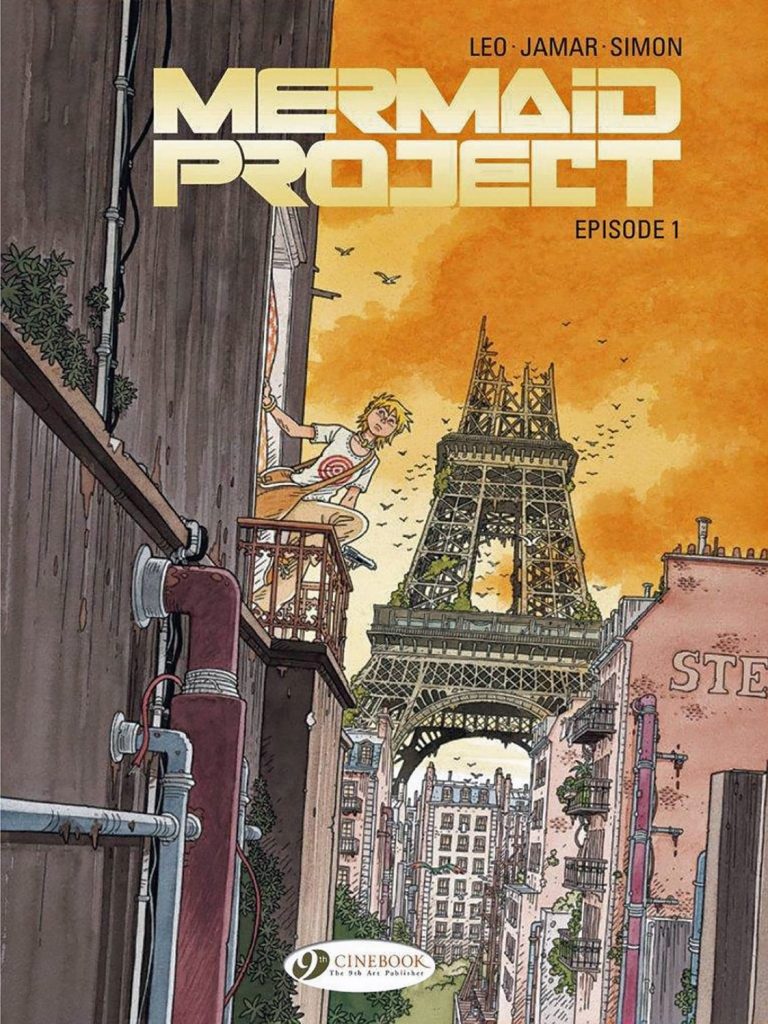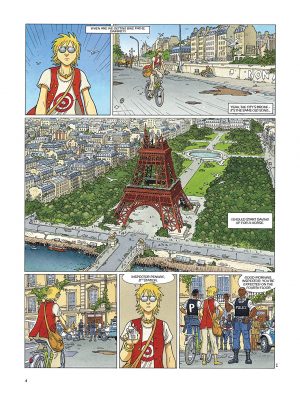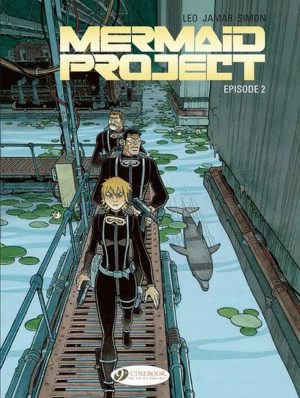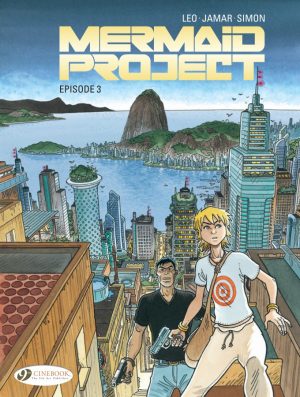Review by Roy Boyd
One could be forgiven for thinking this book is a family affair, with writing duties handled by Leo and Corine Jamar, art by Fred Simon and colours by Jean-Luc Simon. However, it turns out that European-based Brazilian creator Luiz Eduardo de Oliveira contracts his name to Leo, so just like Prince or Madonna has just the one name rather than sharing a surname with Corine. So, the domestic, marital or family relationships of our creators are no clearer. Which is absolutely fine.
On to the book itself: Mermaid Project, Episode 1 is set in a near future where “Earth suffered massive climate, economic and political upheavals.” Rather than the brutal dystopia of Mad Max, this means horse-drawn taxis and the Eiffel Tower in Paris missing its top half. Our heroine, detective Romane Pennac, is the only white person in her department, and she’s told in no uncertain terms that she’s only there to make the department look inclusive. However, she quickly establishes her detecting skills (mention is even made of the Great Detective, Sherlock Holmes) and a mysterious note addressed specifically to her sees Pennac dragged into a case involving a missing body.
Before you know it, she’s on her way to New York with Special Agent El Malik. She visits her twin brother at his place of business (an evil corporation called Agrapower), and it quickly becomes clear that there’s more to the case than a cock-up at the morgue. Indeed, we’re in serious spy territory, with genetic experiments and assassins thrown into the mix.
Mermaid Project has to be applauded for attempting to deal with issues like the dominance of European, American and largely white races over other parts of the world. The future depicted here, where whites are often treated as second-class citizens, is explained in one of the few info-dumps, but this is thorny territory to go wading into. By making such a big issue of this aspect of the story it highlights things (such as the extremely large lips on some of the Afro-Caribbean characters) that might otherwise look like stylistic choices, making one wonder if there’s an element of resentment in their depiction. While it’s more likely that the series is indeed trying to present some balance, it shows how tricky it can be to even discuss a topic that always sees someone being offended about something.
Our story jumps about, from Paris to New York to Quebec. Regardless of where our characters are, the cityscapes are both authentic and gorgeous. This is true of the artwork overall. There’s no avoiding the similarity to Hergé: our protagonist even strides purposefully into rooms just like Tintin. And, just like the Tintin books, the settings, cars, planes and everything else all look entirely convincing.
With Cinebook publications, it’s sometimes difficult to know whether a series is limited or not, but in this instance we can see that it is, running to five episodes for which this is a promising start. There’s no age rating, though later books contain some mild swearing, and there’s nothing to offend. Overall, the artwork is impressive, the story easy to follow – if a bit wordy in places – and well paced, it’s enjoyable and leaves readers keen to find out what happens next. Bring on Episode 2.





